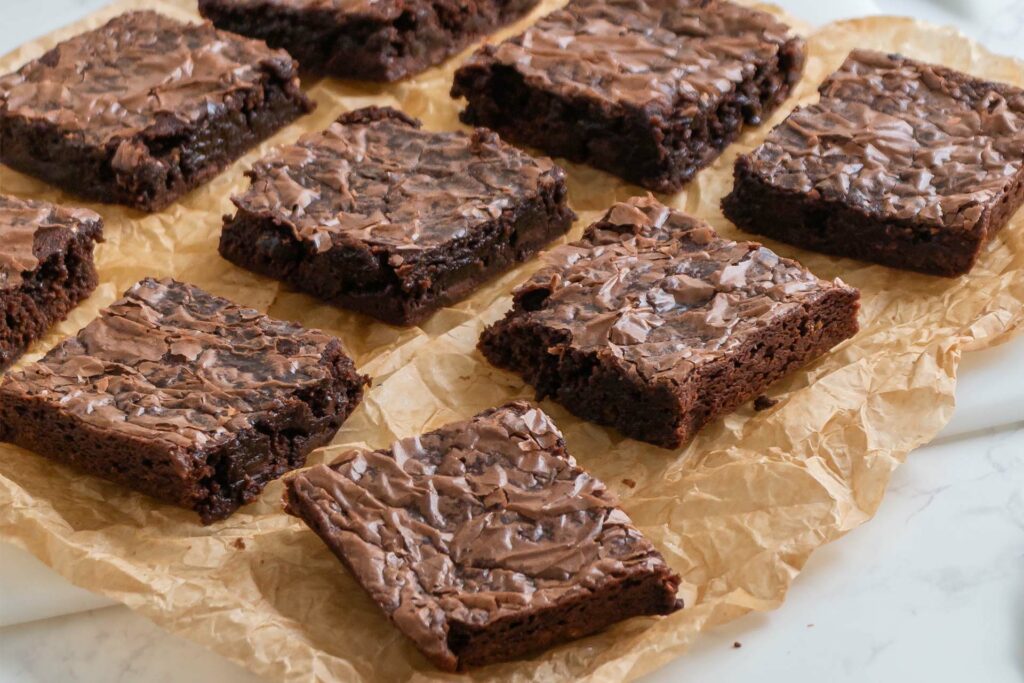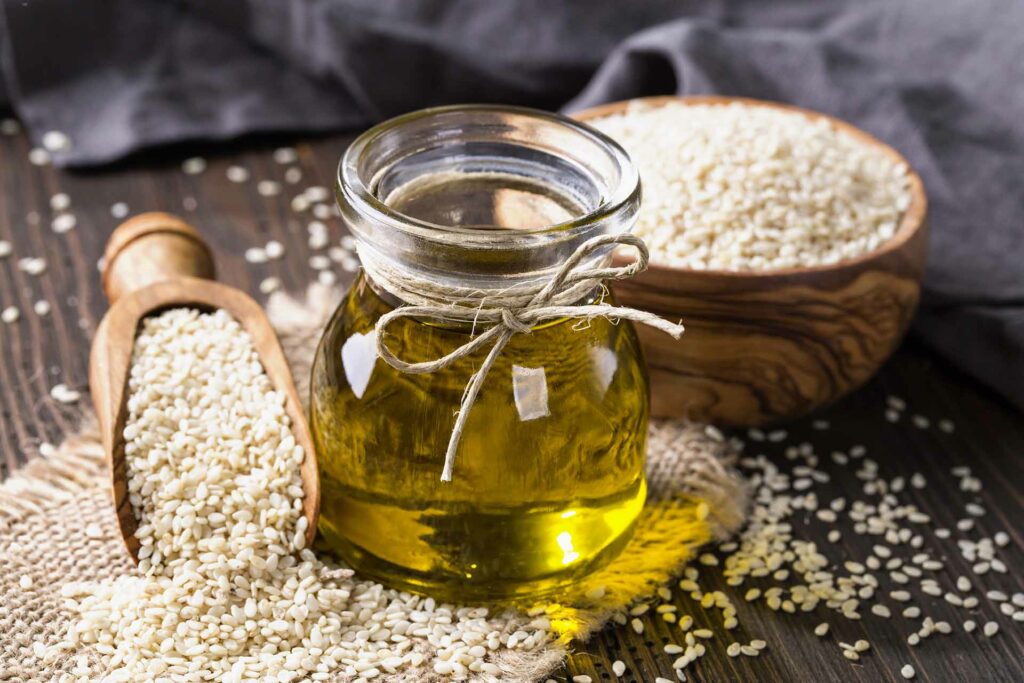Brownies are one of the most beloved treats, with their rich chocolatey flavor and fudgy texture. They are a go-to dessert for many, whether it’s for a special occasion or simply to satisfy a sweet tooth. However, traditional brownie recipes often call for vegetable oil as a key ingredient, which can be a concern for those looking for healthier options or who have dietary restrictions.
In this comprehensive guide, we will delve into the world of vegetable oil substitutes for brownies. We will explore a variety of alternatives that not only maintain the integrity of the brownie but also bring unique flavors and textures to the table.
Understanding Different Types of Vegetable Oil Substitutes
When it comes to finding the perfect substitute for vegetable oil in brownies, there are several options to consider. Each substitute brings its own unique properties, flavors, and nutritional benefits to the table. Let’s explore the different types of vegetable oil substitutes and how they can be used in brownie recipes.
Butter or Margarine
Butter and margarine are common substitutes for vegetable oil in baking, including brownies. They add richness and flavor to the final product. When using butter or margarine as a substitute, make sure to melt it and let it cool slightly before incorporating it into the batter. This allows for easier mixing and ensures even distribution throughout the brownie mixture. Keep in mind that using butter or margarine may result in a slightly denser texture compared to vegetable oil.
Coconut Oil
Coconut oil has gained popularity as a versatile and healthier alternative to vegetable oil. It adds a subtle tropical flavor to brownies and can be used in both liquid and solid forms, depending on the recipe. If using solid coconut oil, melt it before adding it to the brownie batter. Coconut oil solidifies at cooler temperatures, so be sure to let the brownies cool completely before cutting to avoid a greasy texture.
Applesauce
Applesauce is a fantastic option for those looking to reduce the fat content in their brownies. It adds moisture and sweetness to the batter, resulting in a moist and slightly denser texture. When using applesauce as a substitute, replace the vegetable oil with an equal amount of applesauce. It’s important to note that using applesauce may impart a subtle apple flavor to the brownies, which can be quite delightful.
Greek Yogurt
Greek yogurt is another excellent substitute for vegetable oil in brownie recipes. It adds moisture and a tangy flavor to the batter, resulting in a slightly lighter and more cake-like texture. When using Greek yogurt, replace the vegetable oil with an equal amount of yogurt. Choose plain or vanilla-flavored Greek yogurt for a neutral taste, or experiment with fruit-flavored varieties for a burst of flavor.
Avocado
Avocado may seem like an unconventional choice, but its creamy texture and healthy fats make it a surprisingly good substitute for vegetable oil in brownies. When using avocado, mash it until smooth and replace the vegetable oil with an equal amount of mashed avocado. The result is a rich and moist brownie with a subtle avocado undertone. Avocado also adds nutritional benefits, such as fiber and heart-healthy monounsaturated fats.
Nut Butters
Nut butters, such as almond butter or peanut butter, can bring a delightful nutty flavor to your brownies. They add richness and moisture to the batter, resulting in a fudgy and decadent texture. When using nut butter as a substitute, replace the vegetable oil with an equal amount of nut butter. Keep in mind that nut butters can vary in consistency, so choose a smooth and creamy variety for easier mixing.
Pumpkin Puree
Pumpkin puree is a popular substitute for vegetable oil, especially during the fall season. It adds moisture, natural sweetness, and a subtle earthy flavor to brownies. When using pumpkin puree, replace the vegetable oil with an equal amount of puree. The result is a moist and tender brownie with a hint of pumpkin spice. Pumpkin puree also adds nutritional benefits, including vitamins and antioxidants.
Prune Puree
Prune puree may not be the first substitute that comes to mind, but it can be an excellent option for reducing fat content in brownies while adding natural sweetness. Prunes are high in fiber and contain natural sugars, making them a healthier alternative. When using prune puree, replace the vegetable oil with an equal amount of puree. The result is a moist and slightly denser brownie with a rich, dark flavor.
How to Use Vegetable Oil Substitutes in Brownie Recipes
Now that we have explored the different types of vegetable oil substitutes for brownies, let’s dive into the practical aspect of using these substitutes in your recipes. While incorporating substitutes requires some adjustments to the traditional brownie recipe, the end result can be just as delicious, if not better. Here, we will provide step-by-step instructions and tips for successful substitutions.
Step 1: Choose the Right Substitute
When selecting a vegetable oil substitute for your brownie recipe, consider the flavor profile and texture you desire. If you prefer a rich and buttery taste, opt for butter or margarine. For a tropical twist, coconut oil is a fantastic choice. If you want to reduce the fat content, applesauce, Greek yogurt, or prune puree can be excellent options. Consider your preferences and dietary needs to make an informed decision.
Step 2: Adjust the Ratios
Once you have chosen your substitute, it’s crucial to adjust the ratios in the recipe accordingly. In most cases, you can replace the vegetable oil with an equal amount of the substitute. For example, if the recipe calls for 1/2 cup of vegetable oil, use 1/2 cup of the substitute instead. This ensures that the moisture content remains consistent, while the flavor and texture are modified by the substitute.
Step 3: Adapt the Mixing Process
When incorporating the substitute into the brownie batter, it’s essential to adapt the mixing process to ensure proper integration. For substitutes like butter or margarine, melt them and let them cool slightly before adding them to the batter. This helps with easier mixing and even distribution. For substitutes like nut butter or avocado, ensure they are smooth and well-mashed before incorporating them into the mixture.
Step 4: Monitor Baking Time and Temperature
Substituting vegetable oil in brownie recipes may affect the baking time and temperature. Keep a close eye on your brownies while they bake and adjust the time and temperature as needed. If you notice that the edges are browning too quickly, reduce the oven temperature slightly and cover the pan with foil to prevent over-browning. Conversely, if the brownies are not browning evenly, increase the temperature slightly.
Step 5: Achieve the Desired Texture and Flavor
Different substitutes can result in variations in texture and flavor. If you prefer fudgy brownies, substitutes like coconut oil, avocado, or nut butter can contribute to a denser texture. For a cakier texture, applesauce or Greek yogurt can be a great choice. Experiment with different substitutes and ratios to find your preferred combination of texture and flavor.

Additional Tips for Successful Substitutions
- Start with small batches when experimenting with new substitutes to minimize waste.
- Keep in mind that the flavor may vary slightly when using substitutes, so adjust the recipe accordingly by adding additional flavorings such as vanilla extract or cocoa powder.
- If you’re unsure about the amount of substitute to use, start by replacing half of the vegetable oil and gradually increase or decrease until you achieve the desired result.
- Take note of any allergies or dietary restrictions when using substitutes, as some may contain allergens or may not be suitable for specific diets.
By following these steps and tips, you can confidently substitute vegetable oil with alternatives in your brownie recipes. The key is to experiment, have fun, and enjoy the process of creating delicious and unique brownies. In the next section, we will explore the effects of vegetable oil substitutes on brownie texture and flavor, helping you understand the potential variations and outcomes.
Effects of Vegetable Oil Substitutes on Brownie Texture and Flavor
When using vegetable oil substitutes in brownie recipes, it’s important to understand that each substitute can have an impact on the texture and flavor of the final product. While these variations can be delightful, it’s essential to be aware of the potential changes to ensure that the brownies meet your expectations. Let’s explore the effects of different vegetable oil substitutes on brownie texture and flavor.
Texture
- Butter or Margarine: Using butter or margarine as a substitute can result in a slightly denser texture compared to vegetable oil. The fat content in butter and margarine contributes to a fudgier consistency, creating a rich and moist brownie.
- Coconut Oil: Coconut oil can add moisture and richness to brownies, resulting in a dense and fudgy texture. It can also provide a subtle coconut flavor that pairs well with the chocolatey goodness.
- Applesauce: Applesauce adds moisture to the brownie batter, resulting in a moist and slightly denser texture. It can create a cake-like consistency, making it an excellent choice for those who prefer a lighter brownie.
- Greek Yogurt: Greek yogurt contributes to a lighter and cakier texture in brownies. It adds moisture while imparting a tangy flavor. If you enjoy a fluffier and more cake-like brownie, Greek yogurt can be a great substitute.
- Avocado: Avocado can add a creamy and rich texture to brownies. It contributes to a denser and fudgier consistency, similar to using butter. The natural fats in avocado can create a velvety mouthfeel.
- Nut Butters: Nut butters, such as almond butter or peanut butter, can bring a delightful nutty flavor and a fudgy texture to brownies. They add richness and moisture, resulting in a dense and indulgent treat.
- Pumpkin Puree: When using pumpkin puree, the brownies may have a slightly softer and moister texture. The pumpkin puree adds moisture and can create a lighter and more cake-like consistency.
- Prune Puree: Prune puree can contribute to a denser and chewier texture in brownies. The natural sugars in prunes add moisture, resulting in a moist and slightly denser treat.
Flavor
In addition to texture, vegetable oil substitutes can also impart unique flavors to brownies. Here’s a glimpse into the flavors each substitute can bring:
- Butter or Margarine: The use of butter or margarine can add a rich, buttery flavor to brownies, enhancing their overall taste.
- Coconut Oil: Coconut oil can infuse a subtle tropical flavor into the brownies, adding an extra layer of deliciousness.
- Applesauce: Applesauce can lend a slightly fruity and naturally sweet taste to brownies, complementing the chocolatey flavor.
- Greek Yogurt: Greek yogurt can introduce a tangy note to brownies, which can provide a pleasant contrast to the sweetness.
- Avocado: Avocado can contribute a mild, creamy flavor to brownies, enriching the overall taste profile.
- Nut Butters: Nut butters bring a delightful nuttiness to brownies, creating a harmonious blend of chocolate and nut flavors.
- Pumpkin Puree: The use of pumpkin puree adds a hint of pumpkin spice flavor, creating a warm and comforting taste.
- Prune Puree: Prune puree may not contribute a discernible flavor to brownies, but it can add natural sweetness and richness.
Understanding the potential variations in texture and flavor allows you to choose the best vegetable oil substitute for your desired brownie experience. Whether you prefer a dense and fudgy treat or a lighter and cakier delight, there’s a substitute that can cater to your taste preferences.
Additional Tips and Considerations
When using vegetable oil substitutes in brownie recipes, there are a few additional tips and considerations that can help you achieve the best results. These tips will enhance the flavor and texture of your brownies and address common troubleshooting issues that may arise.
Enhancing Flavor and Texture
- Add Flavorings: To enhance the overall flavor of your brownies, consider adding additional flavorings such as vanilla extract, almond extract, or spices like cinnamon or nutmeg. These additions can complement the flavors of the vegetable oil substitutes and create a more complex and delicious taste.
- Mix-ins and Toppings: Experiment with different mix-ins and toppings to add texture and flavor to your brownies. Consider adding chocolate chips, nuts, dried fruits, or shredded coconut for extra indulgence. These additions can elevate the taste and provide delightful bursts of flavor and texture.
- Combining Substitutes: Don’t be afraid to combine different vegetable oil substitutes to create your own unique flavor profile. For example, you can use a combination of applesauce and nut butter or coconut oil and Greek yogurt. These combinations can result in a harmonious blend of flavors and textures.
Troubleshooting Common Issues
- Dry Brownies: If your brownies turn out dry when using a substitute, try reducing the baking time slightly. Overbaking can result in dryness, so keep a close eye on the brownies and test them with a toothpick or skewer for doneness. Additionally, consider increasing the amount of the substitute or adding a bit of moisture, such as a tablespoon of milk or water, to the batter.
- Dense or Heavy Texture: If your brownies come out too dense or heavy, it could be due to using too much of a thick and heavy substitute, such as nut butter or avocado. To remedy this, try reducing the amount of the substitute or using a lighter option, such as applesauce or Greek yogurt, to achieve a lighter texture.
- Greasy Texture: If your brownies end up with a greasy texture, it may be a result of using too much of a substitute with a higher fat content, such as butter or coconut oil. To avoid this, ensure that you are using the recommended amount of substitute and that it is properly incorporated into the batter. You can also try blotting excess oil from the surface of the brownies with a paper towel after they have cooled.
- Flavor Overpowering: If the flavor of your substitute is overpowering the taste of the brownies, try using a milder version of the substitute or reducing the amount used. You can also balance the flavors by adding additional cocoa powder or chocolate chips to enhance the chocolatey taste.
Allergenic Concerns
It’s important to note that some vegetable oil substitutes, such as nut butters, may contain allergens that can cause reactions in individuals with allergies. If you or someone you are baking for has allergies, ensure that the substitute you choose is safe to consume. Always read ingredient labels carefully and consider any dietary restrictions or allergies before using a substitute.
By following these additional tips and addressing common troubleshooting issues, you can create delicious brownies using vegetable oil substitutes. Remember to have fun with the process, experiment with flavors, and tailor the recipe to your preferences.
In the final section of this comprehensive guide, we will conclude our exploration of vegetable oil substitutes for brownies and provide a summary of key takeaways.
Final Thoughts
Throughout this comprehensive guide, we have delved into the world of vegetable oil substitutes for brownies, exploring various alternatives that can enhance the flavor, texture, and nutritional profile of this beloved treat. Whether you are looking to reduce the fat content, add unique flavors, or accommodate dietary restrictions, there is a substitute that can cater to your needs.
We started by understanding the different types of vegetable oil substitutes, including butter or margarine, coconut oil, applesauce, Greek yogurt, avocado, nut butters, pumpkin puree, and prune puree. Each substitute brings its own distinct qualities and can contribute to the overall taste and texture of brownies.
We then discussed how to use these substitutes effectively in brownie recipes, emphasizing the importance of adjusting ratios, adapting the mixing process, and monitoring baking time and temperature. By following these steps, you can successfully incorporate vegetable oil substitutes into your favorite brownie recipes.
Furthermore, we explored the effects of these substitutes on brownie texture and flavor. From fudgy and dense to light and cake-like, each substitute offers a unique experience. By understanding these variations, you can choose the substitute that aligns with your preferences and create brownies that are truly customized to your taste.
To enhance the flavor and texture of your brownies, we provided additional tips and considerations. From adding flavorings and mix-ins to troubleshooting common issues, these tips will help you achieve the best results when using vegetable oil substitutes.
It is crucial to consider any allergenic concerns when selecting substitutes, especially if you or someone you are baking for has allergies. Always read ingredient labels carefully and ensure that the chosen substitute is safe to consume.
In conclusion, experimenting with vegetable oil substitutes for brownies opens up a world of possibilities. Whether you choose to use butter for a rich and indulgent treat, coconut oil for a tropical twist, or applesauce for a healthier option, these substitutes offer a range of flavors and textures that can elevate your brownie game.
So go ahead, get creative in the kitchen, and explore the wonderful world of vegetable oil substitutes for brownies. With the knowledge and tips provided in this guide, you are well-equipped to embark on a delicious baking adventure. Enjoy the process, savor the results, and satisfy your sweet tooth with delectable brownies that suit your unique preferences.
Happy baking!





